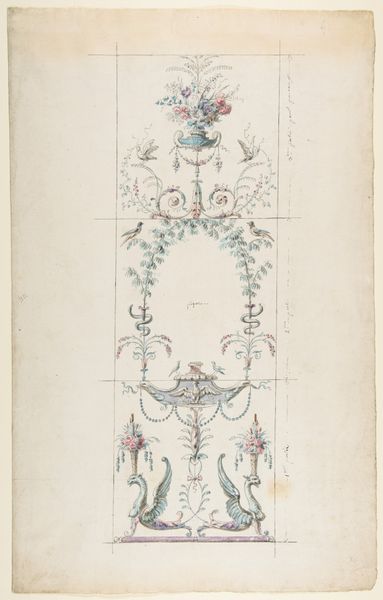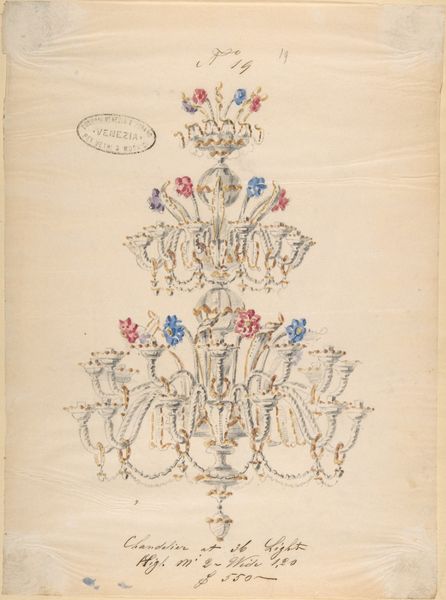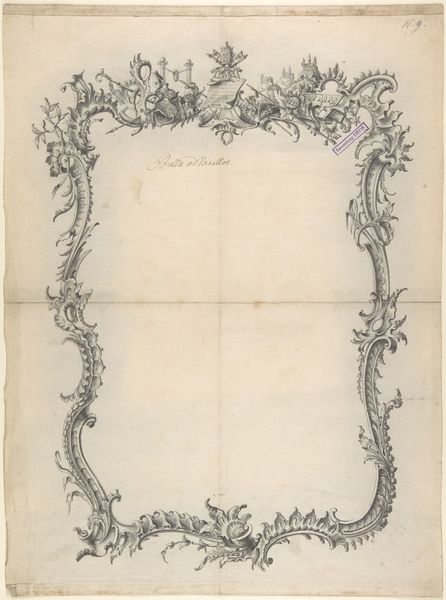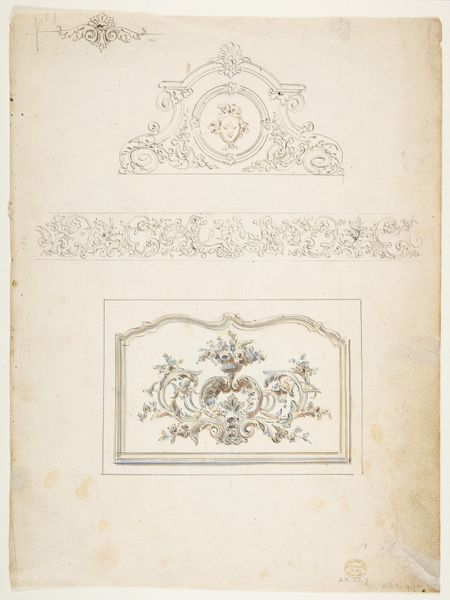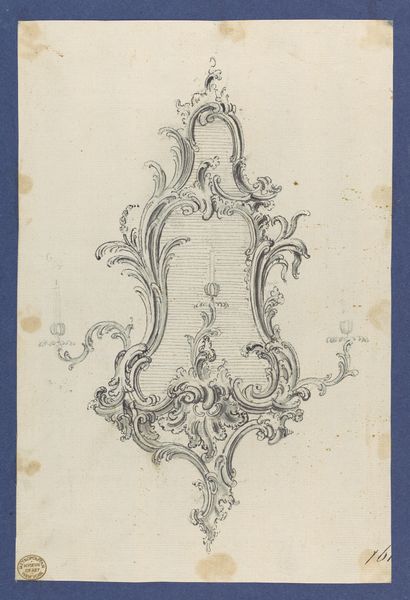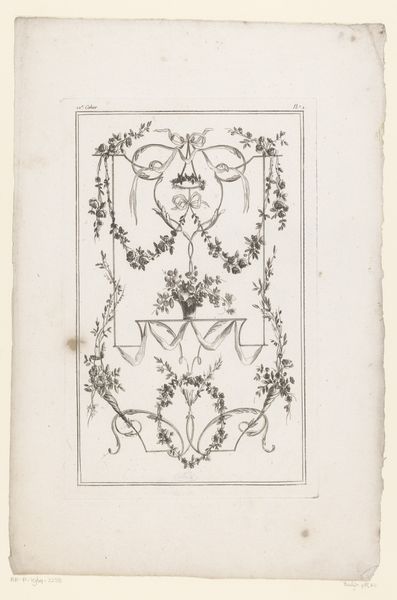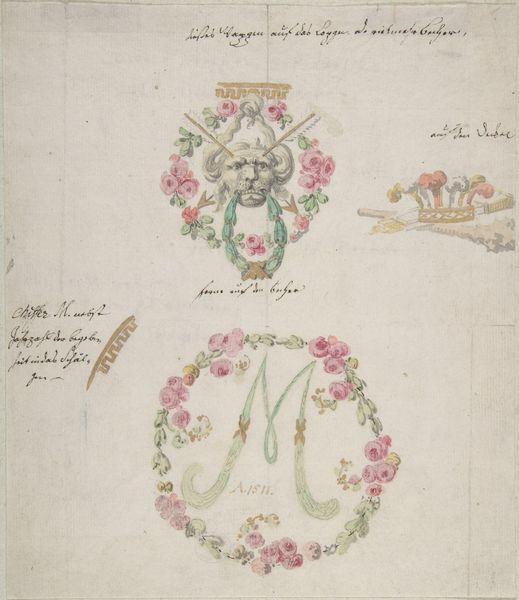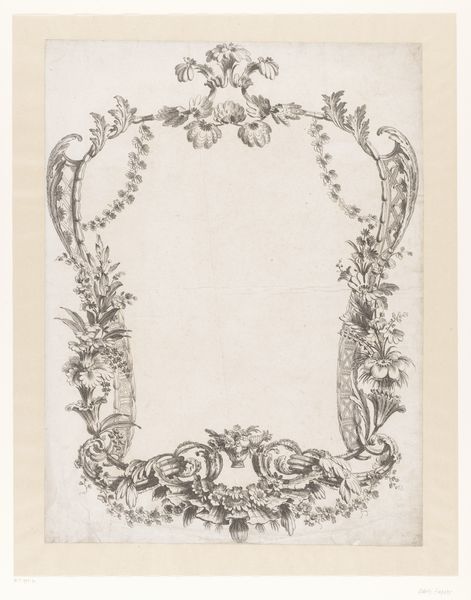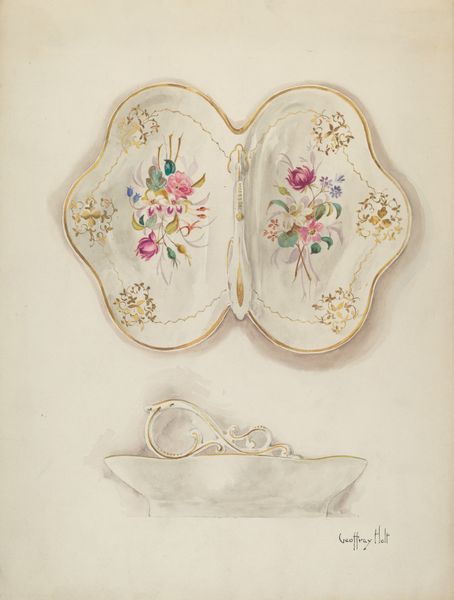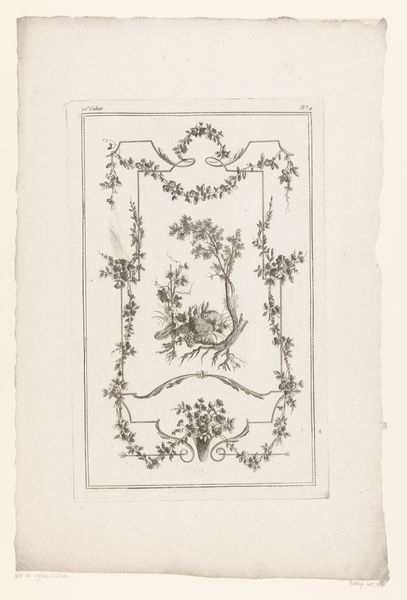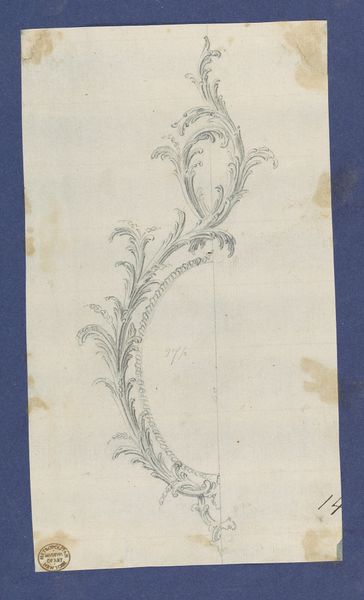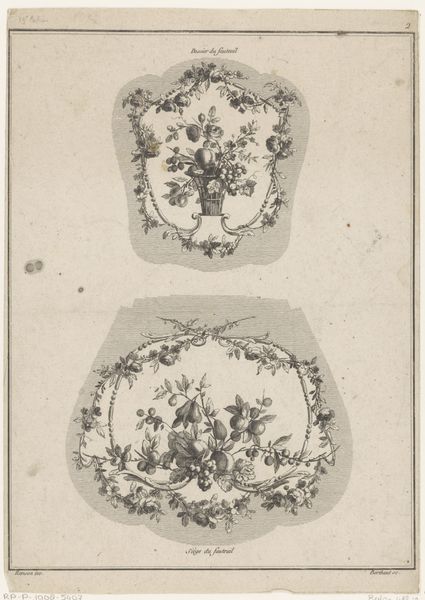
One of Twenty-Three Sheets of Drawings of Glassware (Mirrors, Chandeliers, Goblets, etc.) 1850 - 1880
0:00
0:00
drawing, print, watercolor
#
drawing
# print
#
watercolor
#
coloured pencil
#
academic-art
#
decorative-art
#
watercolor
Dimensions: 14 x 19 in. (35.6 x 48.3 cm)
Copyright: Public Domain
Editor: Here we have "One of Twenty-Three Sheets of Drawings of Glassware" by Compagnia di Venezia e Murano, created sometime between 1850 and 1880. It's a drawing, watercolor and print on paper. The pastel shades are delicate, almost like a dream. How would you interpret this design in terms of reflecting its cultural moment? Curator: It's fascinating how this piece, ostensibly a design for glassware, carries such a potent visual language. Look at the recurring floral motifs combined with the mirroring effect, suggesting a preoccupation with beauty, symmetry, and even vanity that was typical of the time. It's as if the designers sought to embed ideals of beauty into everyday objects, promising to mirror back an enhanced version of reality. Does the placement of flowers around the mirrors draw your eye? Editor: Absolutely, it draws the eye, but the mirrored surface is still the center of attention. Are the types of flowers depicted also significant? Curator: Likely, yes. Specific flowers held symbolic meanings during that period. Roses, for instance, traditionally signify love and beauty, while others might represent more ephemeral qualities. These wouldn’t simply be decorations; they’d function as symbolic cues that reinforce specific cultural values and desires. Do you feel like the drawing’s details offer a deeper cultural understanding? Editor: It makes me think about how much we project our values onto objects even today, but perhaps less consciously than they did then. I hadn’t considered the loaded meanings these motifs carry. Curator: Precisely! It invites us to consider the ways visual symbols transmit cultural memory, shaping how we see ourselves and the world. This work serves as a portal to explore deeper societal norms and aspirations connected to aesthetics, then and now. Editor: I will now definitely pay more attention to decorative details from the past, and appreciate what they communicate beyond mere aesthetics!
Comments
No comments
Be the first to comment and join the conversation on the ultimate creative platform.
